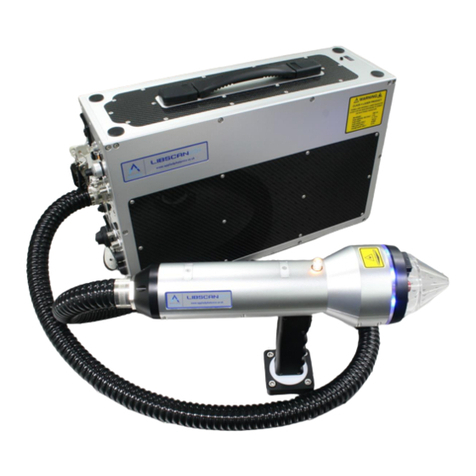© 1998 - 2022 Applied Photonics Ltd Page 3 of 41
1 Introduction
The modular Laser-Induced Breakdown Spectroscopy (LIBS) system described in this User’s Manual is
designed to be a highly versatile product for use by research scientists, application engineers and OEMs.
Essentially a “LIBS system building block”, the LIBS-6 and LIBS-8 modules may be used together with a
variety of Q-switched Nd:YAG lasers and optical spectrometers to form a customised, modular LIBS
system tailored to suit the requirements of a specific application or experimental research project. The
LIBS modules remove the need for the research scientist or application engineer to design and construct
their own laser focussing optics and plasma light collection optics by combining these features into a
compact, integrated and easy to use device. An optional imaging kit may be added to the LIBS module,
increasing further its functionality and versatility.
The modular LIBS system described in this User’s Manual comprises the following main components: a
LIBS-6 module fitted with an optional imaging camera (IMG-HR), an AP-Nano adaptor platform, a
Litron Nano SG 150-10 laser, a SpectroModule-6 multi-channel LIBS spectrometer, an SC-2L modular
sample chamber and a computer running LIBSoft software. In some sections of this User’s Manual, the
following components and devices are also described: LIBS-8 module, SpectroModule-8 six-channel
LIBS spectrometer, Litron Nano LG 300-10 laser, an XYZ-750 modular sample chamber and a dual-
camera imaging system (IMG-HR-2).
This User’s Manual provides the necessary information needed to configure the LIBS equipment and how
to operate the equipment safely. It is assumed that the user is familiar with the safety issues arising from
the use of high-power lasers and will have preferably been trained in the safe use of high-power (Class 4)
laser products.
2 Safety
2.1 Laser radiation
The modular LIBS system utilises a high-power Q-switched Nd:YAG laser (Class 4) and so it is
imperative the equipment is operated only by suitably trained and experienced persons who are fully
aware of the hazards inherent to this type of high-power laser equipment. It is imperative also that, prior
to using the equipment, an appropriate risk assessment is conducted in such a way as to take account of
the proposed use of the equipment, the environment in which the equipment is to be operated, and how its
use may affect people who are not directly involved with the use of the equipment.
Example of a laser warning product label
The modular LIBS system is designed to meet the laser safety requirements of the relevant European
standards (BS EN 60825) and USA standards (ANSI Z136.1). Although the modular LIBS system is
supplied with a sample chamber which provides adequate containment of the laser radiation to Class 1
Accessible Emission Limits, it is possible for the user to operate the LIBS equipment without the sample
chamber (i.e. operation in “open beam” mode as may be required for certain types of experiment).
Accordingly, it is necessary to consider the modular LIBS system to be a Class 4 Laser Product and so,
by definition, the equipment poses a risk of personal injury (eye, skin injury) and poses a fire risk. As




























